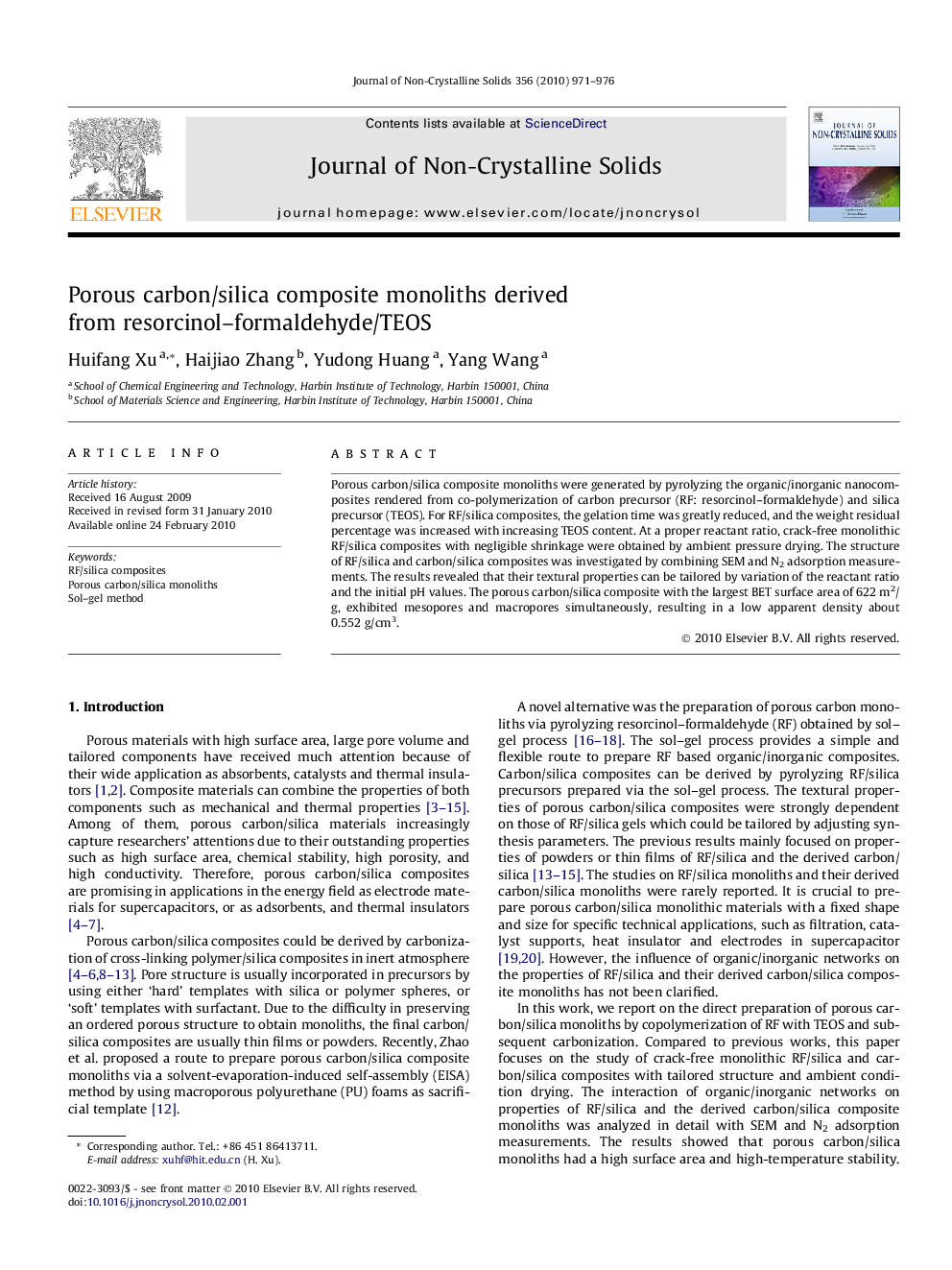| Article ID | Journal | Published Year | Pages | File Type |
|---|---|---|---|---|
| 1483509 | Journal of Non-Crystalline Solids | 2010 | 6 Pages |
Porous carbon/silica composite monoliths were generated by pyrolyzing the organic/inorganic nanocomposites rendered from co-polymerization of carbon precursor (RF: resorcinol–formaldehyde) and silica precursor (TEOS). For RF/silica composites, the gelation time was greatly reduced, and the weight residual percentage was increased with increasing TEOS content. At a proper reactant ratio, crack-free monolithic RF/silica composites with negligible shrinkage were obtained by ambient pressure drying. The structure of RF/silica and carbon/silica composites was investigated by combining SEM and N2 adsorption measurements. The results revealed that their textural properties can be tailored by variation of the reactant ratio and the initial pH values. The porous carbon/silica composite with the largest BET surface area of 622 m2/g, exhibited mesopores and macropores simultaneously, resulting in a low apparent density about 0.552 g/cm3.
